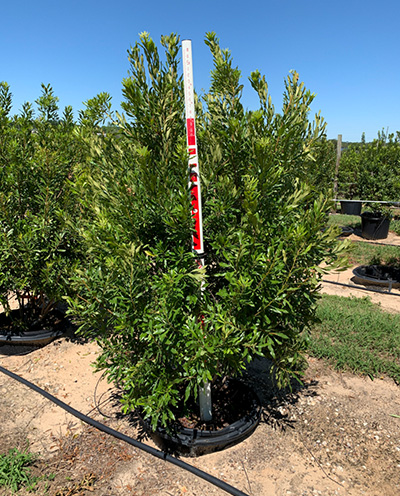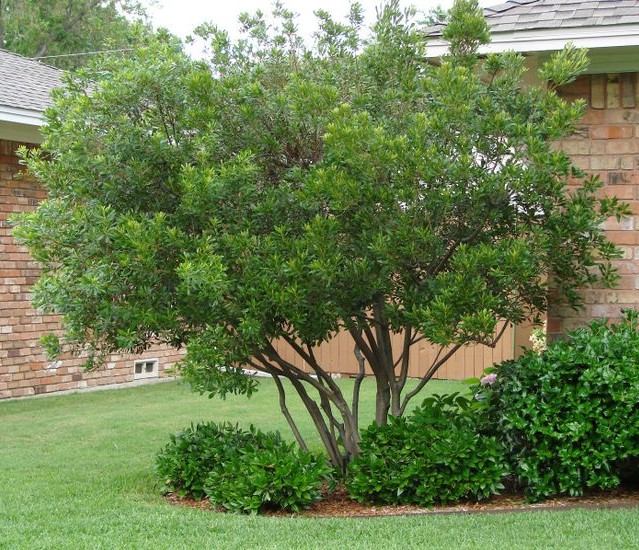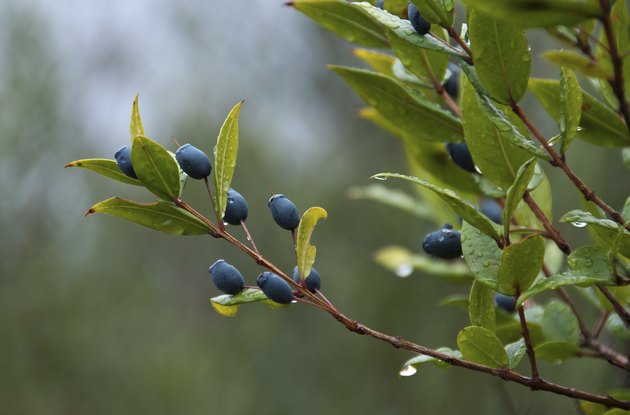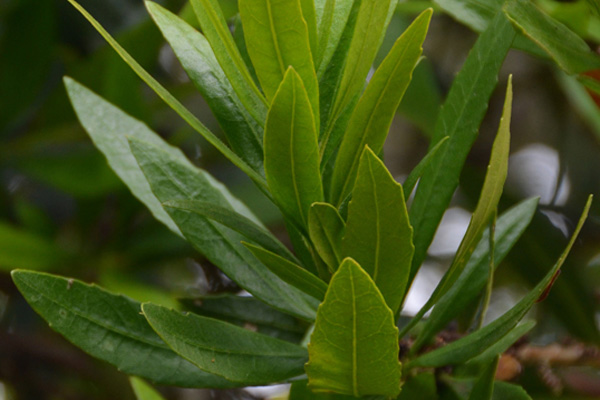Wax Myrtle
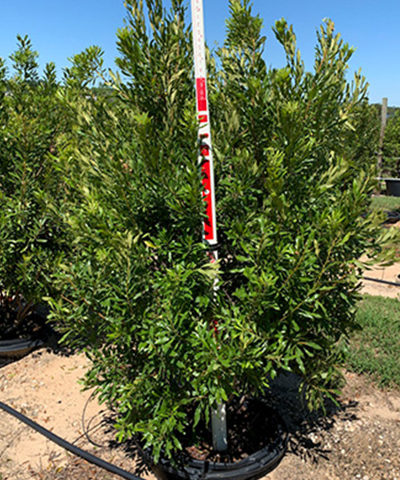
Myrica cerifera
The Myrica cerifera, commonly known as the Wax Myrtle or Mayberry tree, is formed by multiple twisted trunks and smooth, aromatic olive green leaves. The Wax Myrtle is quick-growing and commonly used as either a tree or a shrub, with the capabilities of reaching heights greater than 20 feet with an equivalent spread. Birds such as wild turkey, quail, waterfowl, catbirds, bluebirds and warblers are attracted to the pale blue berries that the female plants grow in the fall and maintain throughout the winter. Butterflies and bees will also flock to tree, but because of its aromatic foliage, it will repel insects. Because there are separate male and female plants, if you want berries, you must have male plants close enough to the berry-producing female plants for pollination to occur. At Cherrylake, we start our liners with eight seeds per liner cell, making it possible (but not guaranteed) to get both male and female plants in the same container. The berries have a waxy coating, which were once used to make candles.
Although a tough and easily grown variety, the Wax Myrtle’s multiple trunks may not withstand strong winds. You can prune the Wax Myrtle to not only to show off their picturesque form, but also to help build a strong structure. They grow best in full sun, but while they can tolerate shade, they will grow a thinner canopy. They do best with well-draining soil and are salt tolerant, making it suitable for seaside applications. Wax Myrtles are adaptable to many habitats and conditions and while they grow naturally in wetlands, they can also thrive in the landscape.
Ornamental Characteristics:
Native Origin:
North America
Common Names:
Wax Myrtle, Southern Way Myrtle, Southern
Bayberry, Bayberry, Candleberry, Tallow Shrub
Description:
Hardy Range: 7B – 11
Mature Height: 15’ – 25’
Mature Spread: 20’ – 25’
Growth Rate: fast
Growth Habit: round, vase shape
Ornamental Characteristics:
The Wax Myrtle can grow upwards of 25 feet with n equivalent spread, but it is most commonly seen in the 10 to 20 foot range. It is a multi-trunk tree, and each unique trunk is twisted and slightly crooked. Its bark is grey and white, and berries are blue/grey. The foliage of this tree is made up of aromatic olive green leaves.
Environment:
Soil: clay, sand, loam, alkaline, acidic, extended flooding, well-drained
Salt: high
Exposure: full sun, partial sun, or partial shade, shade tolerant
Drought Tolerance: moderate

